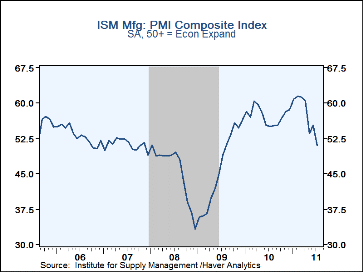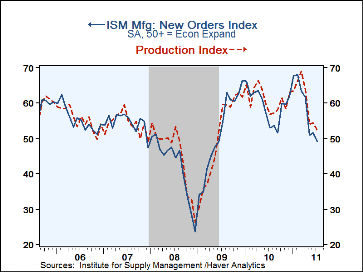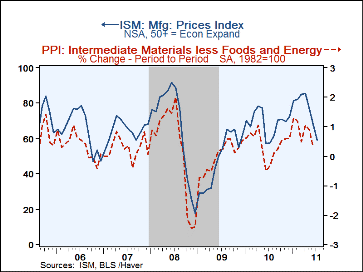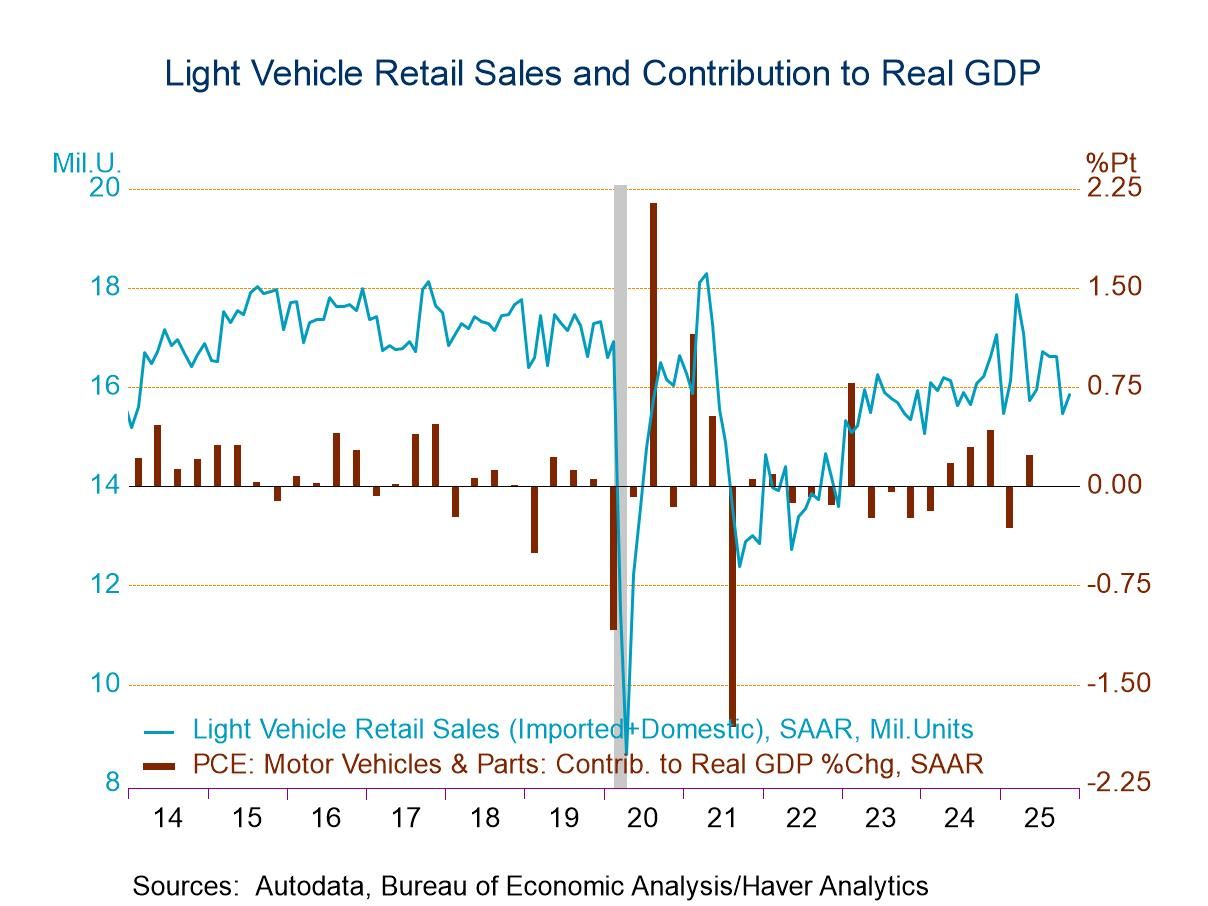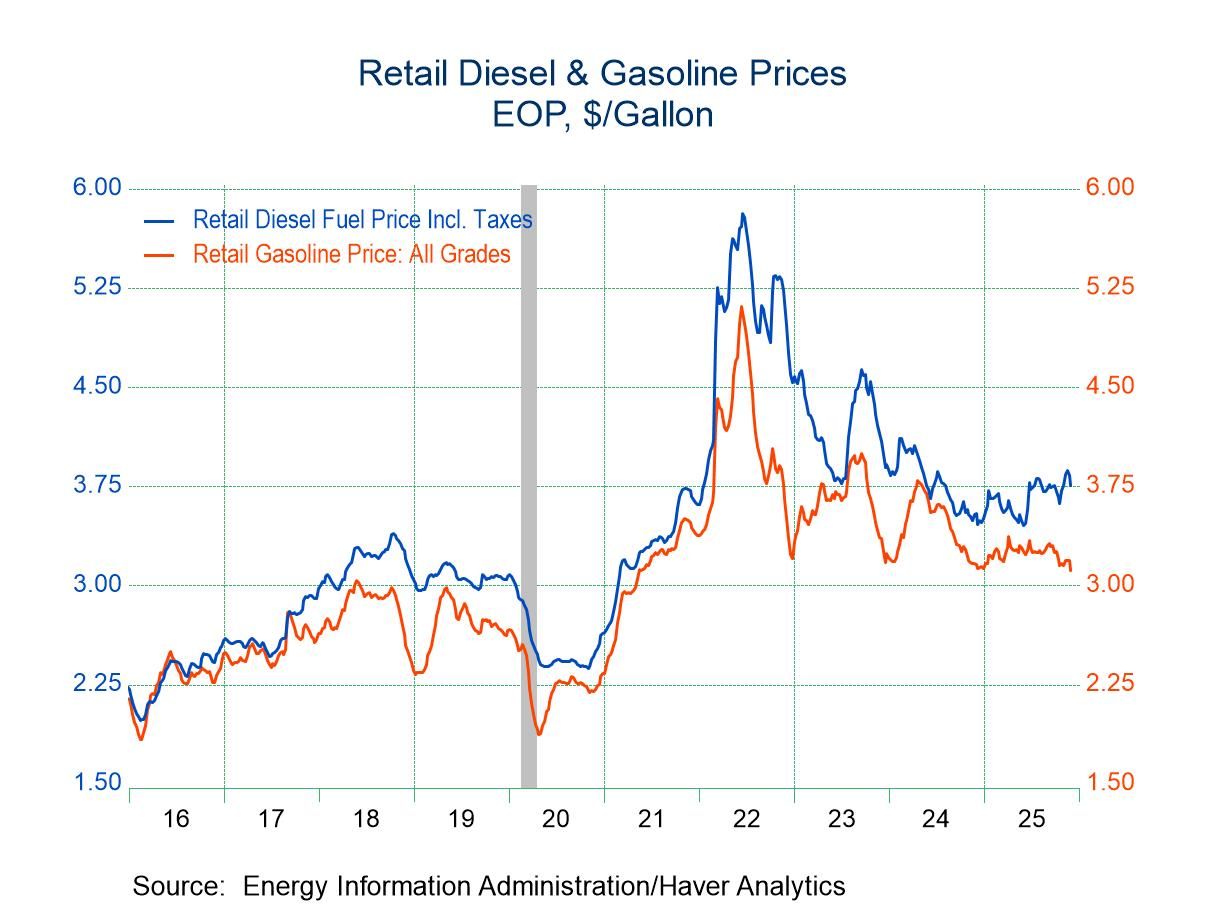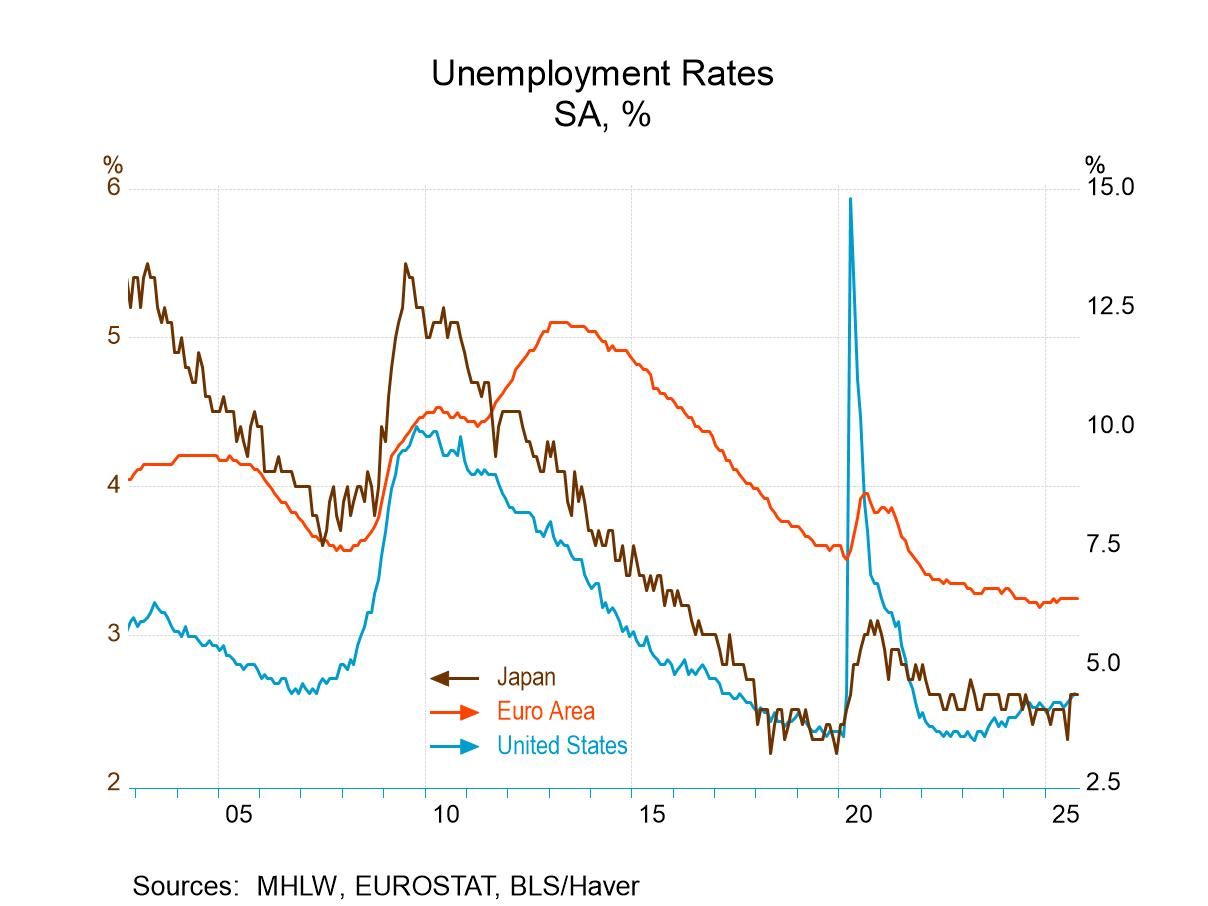 Global| Aug 01 2011
Global| Aug 01 2011U.S. ISM Factory Index Declines Unexpectedly
by:Tom Moeller
|in:Economy in Brief
Summary
The Institute for Supply Management indicated that its July Composite Index of factory sector activity dropped sharply to 50.9 from an unrevised 55.3 in June. The figure was nearly the lowest since the economic recovery began two [...]
The Institute for Supply Management indicated that its July Composite Index of factory sector activity dropped sharply to 50.9 from an unrevised 55.3 in June. The figure was nearly the lowest since the economic recovery began two years ago. It also compared unfavorably to Consensus expectations for a just a slight decline to 55.0. The reading continued to indicate positive factory growth and was the twenty-fourth consecutive monthly figure above the break-even level of 50. It was up from the low of 32.5 reached in December '08.
Each of the index's five components declined last month, but it was the employment component that declined the most. Its reading of 53.5 still indicated positive jobs growth, but it was the least since it was negative in September, 2009. During the last ten years there has been a 91% correlation between the employment series level and the m/m change in factory sector payrolls. Supplier deliveries (quicker speeds) and inventories followed with the next sharpest declines to 50.4 and 49.3, respectively. Finally, though the new orders index fell less sharply m/m, it was into less-than-break even territory and was the lowest reading in two years. The production reading of 52.3 indicated barely positive growth and also was nearly the lowest of the recovery.
The weakness in activity crimped firms' ability to raise prices. The price reading of 59.0 was its lowest in twelve months. Just one-third of firms raised prices, half that three months ago, while seventeen percent lowered them, the most in a year. During the last ten years there has been an 83% correlation between the index and the m/m change in the core intermediate producer price index.
The separate index of new export orders rose slightly to 54.0. However, the index remained well below its high of 62.0 reached in April and early last year as well.
The ISM figures are diffusion indexes and can be found in Haver's USECON database. The forecast data is in the AS1REPNA database.
| ISM Mfg | Jul | Jun | May | Jul'10 | 2010 | 2009 | 2008 |
|---|---|---|---|---|---|---|---|
| Composite Index | 50.9 | 55.3 | 53.5 | 55.1 | 57.3 | 46.3 | 45.5 |
| New Orders | 49.2 | 51.6 | 51.0 | 52.9 | 59.3 | 51.7 | 42.1 |
| Employment | 53.5 | 59.9 | 58.2 | 57.6 | 57.3 | 40.6 | 43.1 |
| Production | 52.3 | 54.5 | 54.0 | 56.9 | 61.1 | 50.5 | 45.1 |
| Supplier Deliveries | 50.4 | 56.3 | 55.7 | 58.0 | 58.1 | 51.5 | 51.6 |
| Inventories | 49.3 | 54.1 | 48.7 | 50.3 | 50.8 | 37.1 | 45.5 |
| Prices Paid Index (NSA) | 59.0 | 68.0 | 76.5 | 57.5 | 68.9 | 48.3 | 66.5 |
Tom Moeller
AuthorMore in Author Profile »Prior to joining Haver Analytics in 2000, Mr. Moeller worked as the Economist at Chancellor Capital Management from 1985 to 1999. There, he developed comprehensive economic forecasts and interpreted economic data for equity and fixed income portfolio managers. Also at Chancellor, Mr. Moeller worked as an equity analyst and was responsible for researching and rating companies in the economically sensitive automobile and housing industries for investment in Chancellor’s equity portfolio. Prior to joining Chancellor, Mr. Moeller was an Economist at Citibank from 1979 to 1984. He also analyzed pricing behavior in the metals industry for the Council on Wage and Price Stability in Washington, D.C. In 1999, Mr. Moeller received the award for most accurate forecast from the Forecasters' Club of New York. From 1990 to 1992 he was President of the New York Association for Business Economists. Mr. Moeller earned an M.B.A. in Finance from Fordham University, where he graduated in 1987. He holds a Bachelor of Arts in Economics from George Washington University.


